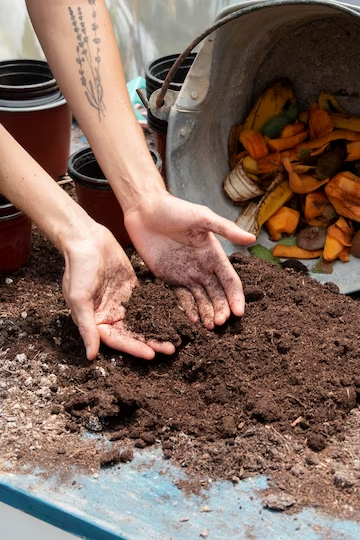Introduction:
Welcome to the world of vegetable gardening! If you've ever dreamt of growing your own fresh and delicious produce, this blog post is your ultimate guide. Whether you have a sprawling backyard or a tiny balcony, you can cultivate a thriving vegetable garden with the right ideas and tips. Let's dive into the exciting journey of starting a vegetable garden for beginners.
1. Selecting the Perfect Spot for Your Vegetable Garden:
The foundation of a successful vegetable garden lies in selecting the perfect spot:
a) Embrace the Sun: Find a location with ample sunlight, at least 6 hours a day. Vegetables thrive in sunshine and will reward you with bountiful yields.
b) Ensure Good Drainage: Avoid waterlogged soil by picking an area with proper drainage. Raised beds can be an excellent solution for gardens with drainage issues.
c) Access to Water: Make watering a breeze by situating your garden close to a water source. This will ultimately save you time and effort in the long term.
2. Selecting the Best Vegetables for Beginners:
As a beginner, start with easy-to-grow vegetables that are sure to flourish:
a) Tasty Tomatoes: Enjoy the satisfaction of growing your own juicy tomatoes, suitable for both pots and garden beds.
b) Lettuce Varieties: Sow different lettuce types like leaf, romaine, or butterhead for a constant supply of fresh salad greens.
c) Zucchini Delight: Zucchini plants are productive and don't demand much attention, making them ideal for beginners.
d) Radishes in a Flash: Radishes are quick-growing and a fantastic choice for learning the ropes of vegetable gardening.
e) Herb Haven: Begin an herb garden with popular choices like basil, parsley, and mint, adding flavor to your culinary creations.
3. Preparing the Soil and Planting:
Before planting, ensure your soil is ready to nurture your vegetable plants:
a) Weed Out the Competition: Clear the area of weeds and debris, giving your vegetables a clean start.
b) Boost Soil Health: Enrich your soil with compost or well-rotted organic matter to provide essential nutrients for plant growth.
c) Follow Planting Guidelines: Pay attention to recommended spacing and planting depths mentioned on seed packets or plant labels.
4. Watering and Caring for Your Vegetable Garden:
Nurturing your garden properly ensures healthy and robust plants:
a) The Golden Rule of Watering: Water your plants consistently and deeply. Maintain consistent soil moisture, particularly during dry spells.
b) Mulch Magic: Mulching around plants helps retain moisture, suppresses weeds, and keeps the soil temperature stable.
c) Provide Support: For tall-growing plants like tomatoes or cucumbers, use stakes or trellises to provide support and prevent bending.
5. Dealing with Common Garden Pests and Diseases:
Don't be disheartened by pests and diseases; you can handle them with these methods:
a) Go Natural: Employ natural repellents like neem oil or garlic spray to deter pests without harming beneficial insects.
b) Regular Inspections: Check your plants regularly for signs of pests or diseases. Detecting early is essential for effective control.
c) Crop Rotation: Rotate your crops each season to prevent the buildup of pests and diseases in the soil.
6. Harvesting Your Homegrown Vegetables:
The most rewarding part of gardening is enjoying the fruits of your labor:
a) Frequent Harvesting: For leafy greens and herbs, harvest often to encourage continuous growth.
b) Timing is Key: Pick vegetables at their peak ripeness for the best flavor and texture.
c) Savor the Flavors: There's nothing quite like savoring the taste of homegrown vegetables on your plate.
Conclusion:
Congratulations, you're now equipped with fantastic vegetable garden ideas for beginners! It's time to put on your gardening gloves, dig into the soil, and embrace the joy of nurturing your very own vegetable garden. Remember, every garden has its learning curve, but with passion and persistence, you'll soon be reaping the rewards of fresh and nutritious produce. Happy gardening!

